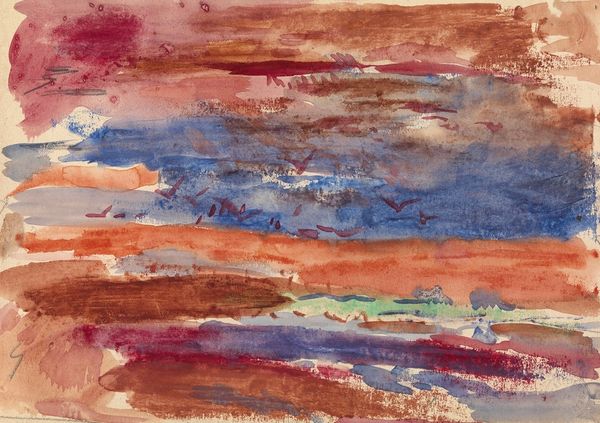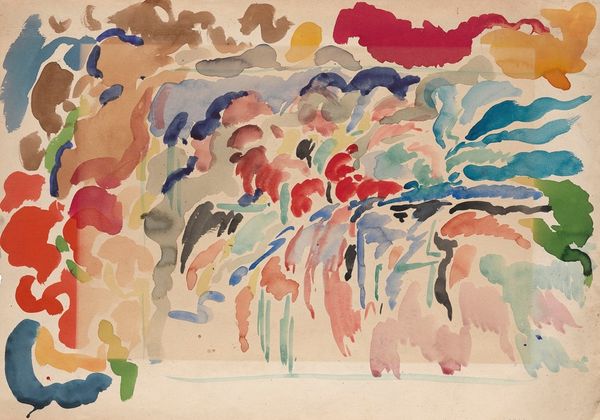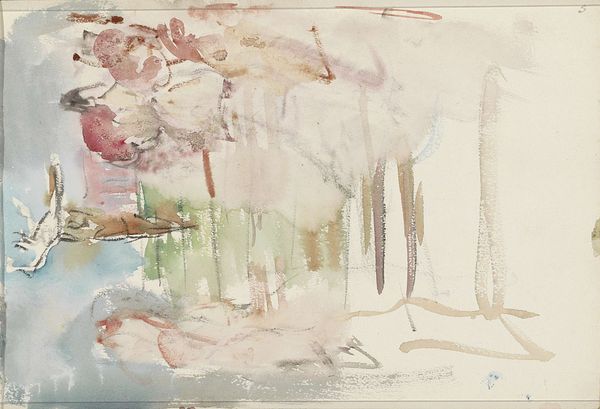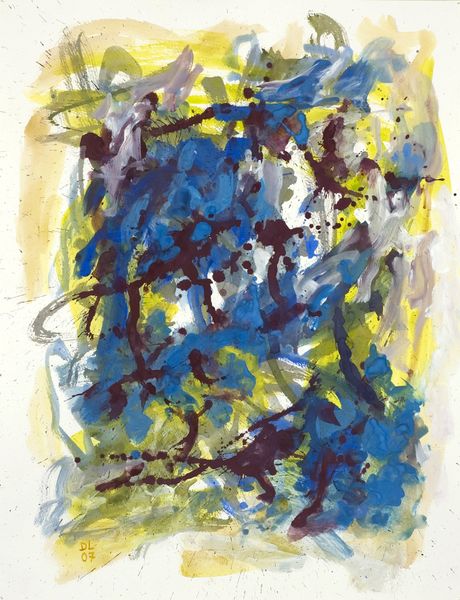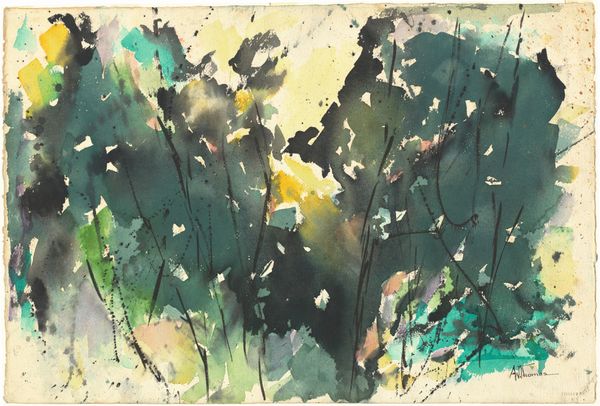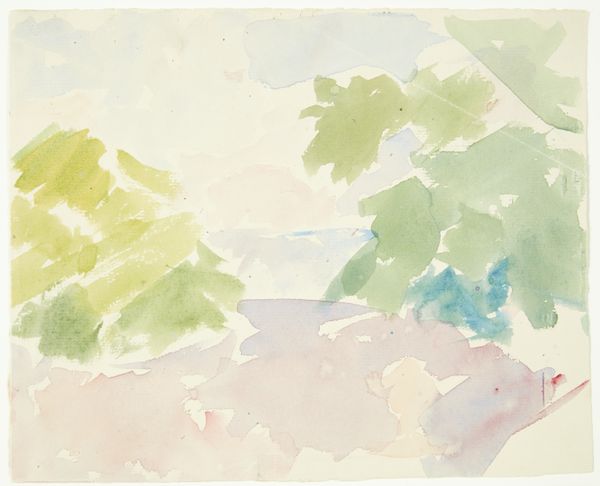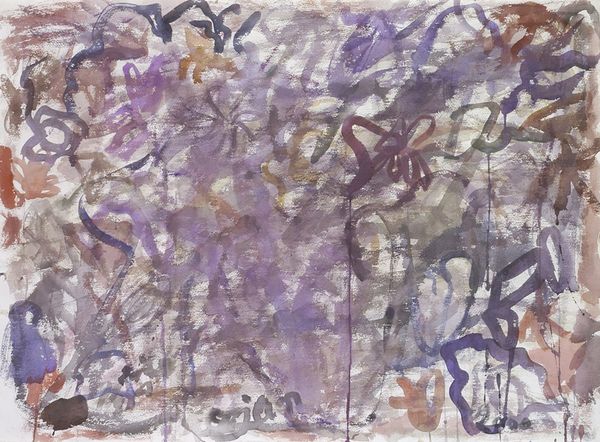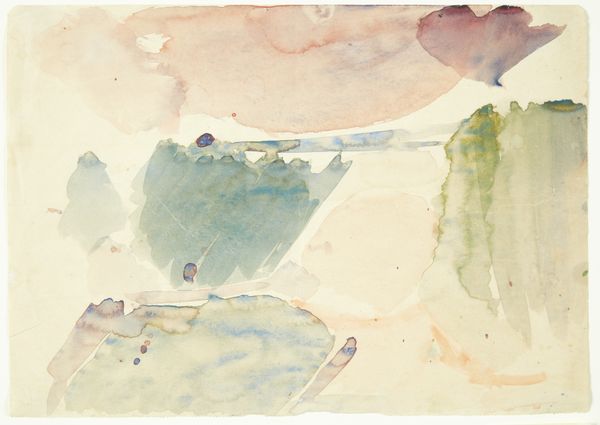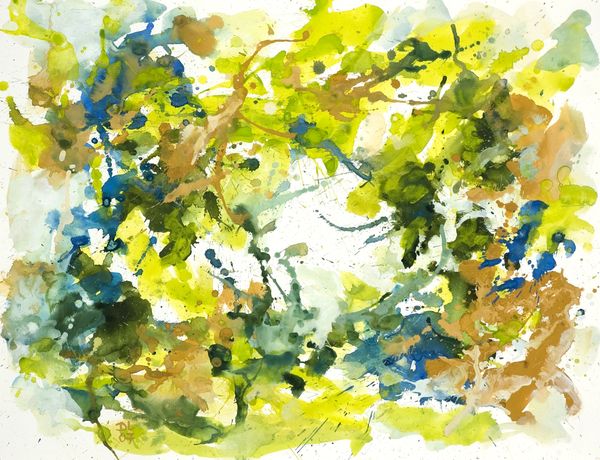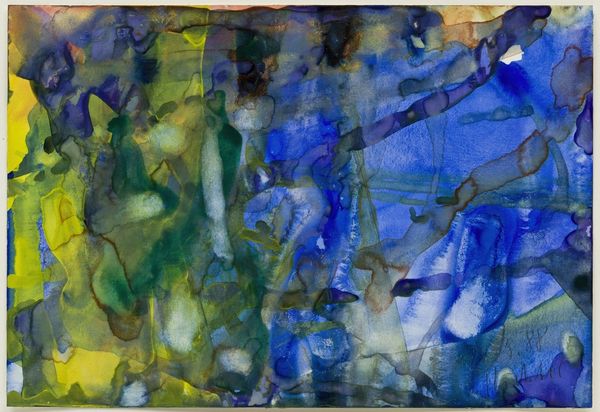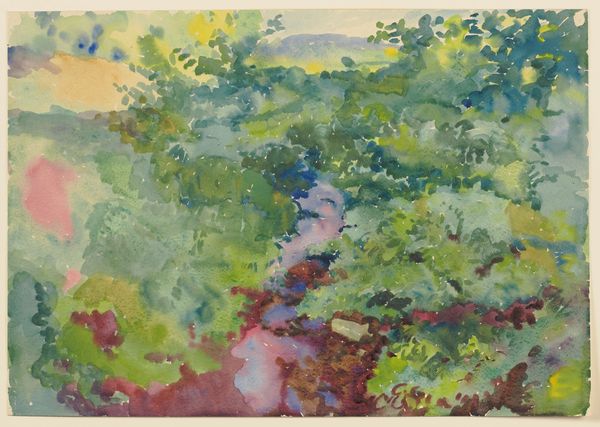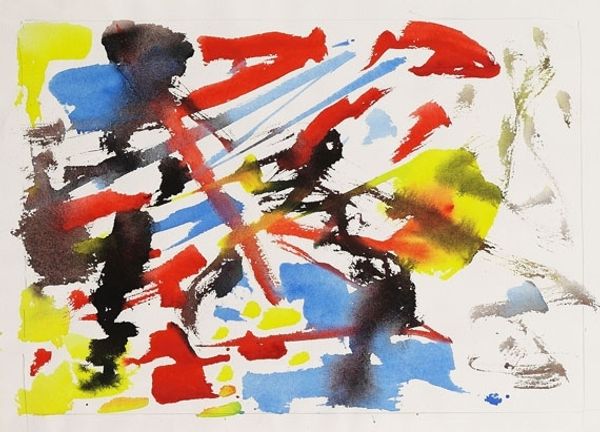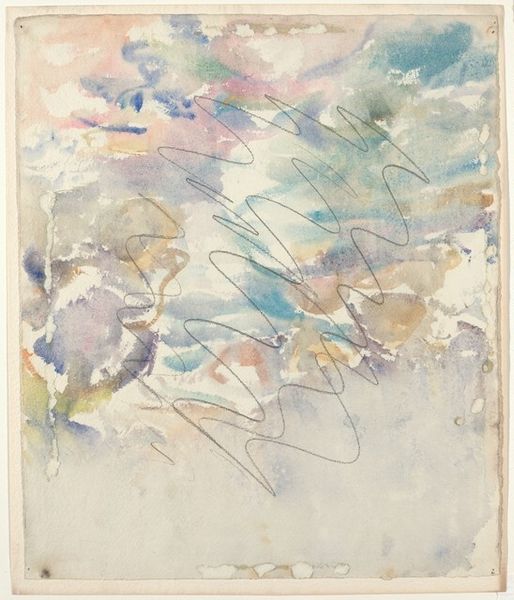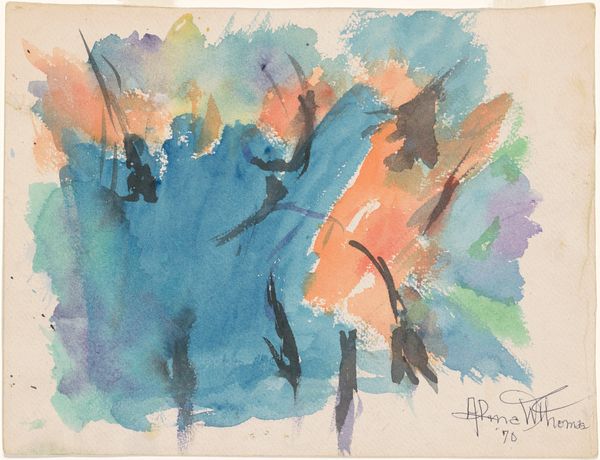
Copyright: Public Domain: Artvee
Curator: Here we have "Landscape, Boitsfort, with Blooming Fruit Trees" a watercolor by Rik Wouters, likely painted sometime between 1892 and 1916. Editor: My initial reaction is one of vibrant, almost dreamlike transience. The loose washes of color give a sense of a fleeting moment in nature. It's less a depiction, more an evocation. Curator: I agree, the dreamlike quality aligns well with the blossoming of the Fauvist movement at the time. Though clearly rooted in Impressionism through its plein-air style and fascination with light. Wouters has infused a personal chromatic touch. Editor: Yes, the Fauvist influence is undeniable in the heightened, almost arbitrary use of color. Look at the blues and reds swirling throughout. I would say there's tension here: those bold colors pushing against the gentle dissolving nature of watercolor create an active surface. Curator: These colours may have resonated more deeply. Flowering fruit trees were traditional symbols of not only springtime renewal, but more significantly in art represented a coming age, or rebirth for the artist, maybe this subject served a therapeutic meaning for him? Editor: A persuasive perspective. I’m struck by the way he applies the paint; seemingly effortless but completely controlled. There’s real formal intelligence at work determining the chromatic scale and depth, deciding when to apply, and when to stop and let it breathe. It brings in a psychological component through colour associations with certain emotions, in turn activating the subconscious mind of the audience, provoking specific thought patterns and connections within the mind. Curator: It reminds us that even works with the visual immediacy of watercolor, such as those made 'en plein air' and with limited colour variation are far more calculated than we tend to think. The symbolism is carefully structured for its message. Editor: Yes. Beyond the technique and symbolism, though, the essence of the work lies in its transience; it exists somewhere between what the artist saw and how he felt. Curator: Beautifully put. I'll look at Wouters differently now. Editor: As will I. This was definitely an illuminating perspective on the temporality of Fauvism.
Comments
No comments
Be the first to comment and join the conversation on the ultimate creative platform.
